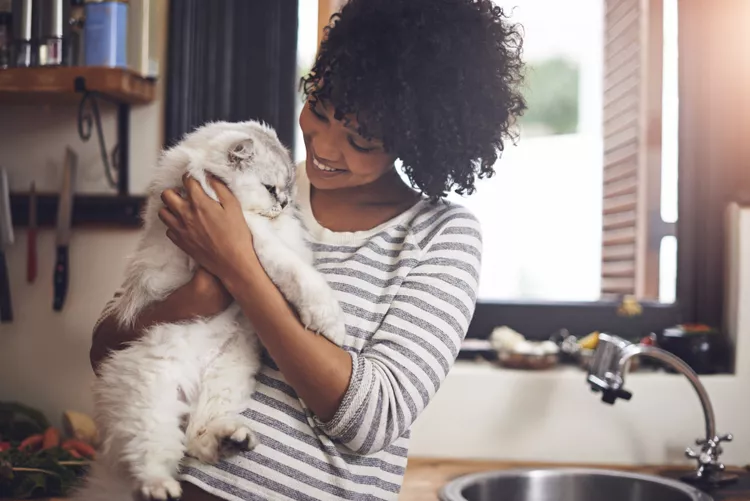What Is a Domestic Cat?

When it comes to the phrase "domestic cat," some people may get confused. A domestic cat by the sheer definition of the word is supposed to be a cat the resides in a domicile—however, not all domestic cats are house cats. Domestic cats can be a purebred, mixed breed, live in a house or farm with humans, or reside in a neighborhood as a stray or feral cat.
Millennia in the Making
Domestic cats or domesticated cats came to be thousands of years ago through selective breeding. Formerly wild cats and big cats, domestic cats were bred to have the "wild" characteristics removed from their DNA.
Artificial selection, a term coined by biologist Charles Darwin, is a process used by humans to develop new organisms with desirable characteristics. Breeders select two parents that have beneficial traits to reproduce, yielding offspring with those desired traits.
All cats today descend from those original cats in Africa, the Mediterranean, and Middle East regions. All cats may be dubbed "domestic," without any regard for their breeding.
Mixed-Breed Cats
A mixed-breed cat is any cat of unknown origin with body types, coats, and/or color pattern. The cat may have markings similar to one or another breed, but unless there is a long line of genealogy records and pedigree registration with the Cat Fanciers' Association or another organization, the cat is classified as a mixed breed. For example, no matter how much a cat may resemble a Siamese cat, in most cases, that cat would be considered a Siamese mix.
Purebred Cats
The Cat Fanciers' Association is the main registering body for pedigreed cat breeds in the U.S. The organization recognizes 42 breeds like Siamese, Persian, Maine coon cat, Bengal, and so on. The International Cat Association recognizes 71 breeds from the ancient Abyssinian to newer breeds like the lykoi "werewolf" cat and the wild-looking chausie, which was derived from a wild jungle cat. Both organizations are based in the United States, host competitions, and maintain the breed standards for purebred cats.
Infinite Variety of Domestic Cats
Domestic cats come in all sizes, shapes, coat lengths, and color patterns. You will find all the solid colors, plus combinations of all of them—purebred or not.
Domestic cats come with many descriptive names. They also are called "house cats," "alley cats," "moggies" (in the U.K.), and in cat shows that allow them, these domestic, mixed-breed cats are usually in a class called "Household Pets."
Recent Breeds
Most new cat breeds in the past 50 years have been the result of careful breeding programs by experts in feline genetics or some come about through happenstance. Occasionally, a litter born of a domestic cat may contain one or two kittens so completely unusual that they may be used as the foundation of a new breed.
- American bobtail: The American bobtail originated in the late 1960s with a male brown tabby kitten. According to urban legend, it was the result of a domestic cat mixing with a bobcat on an Indian reservation in the Southwest U.S.
- American curl: As a result of a serendipitous genetic accident, the first American curl kittens were born to a longhaired black stray with unusual ears in Lakewood, California, in 1981.
- Cornish Rex: The Cornish Rex is the oldest of the three Rex cats breeds, originating around 1950 as a spontaneous mutation in a litter of barn cats.
- Munchkin: Although short-legged cats have seemed to have been around longer, the munchkin, a breed of short-legged cats, did not become classified as its own category until 1983 in Louisiana.
- Pixiebob: The Pixiebob was officially recognized by the International Cat Association as a breed in 1994. The American Cat Fanciers Association (ACFA) followed suit in 2005 to accept the Pixie-Bob as a recognized breed. It is believed to be the mix between a bobcat and a barn cat.